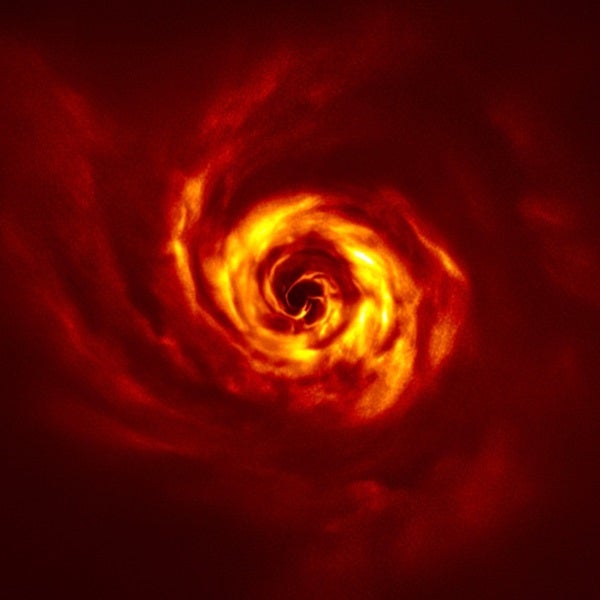Q: What causes the formation of spiral arms in galaxies? Do spiral arms form in other flattened groups of orbiting objects, like planetary rings and protostellar disks?
A: Spiral arms in galaxies can form by a combination of processes. In a spiral galaxy, everything orbits at the same speed, meaning stars and gas near the center of the galaxy complete an orbit in less time than objects farther out. This effect is referred to as differential rotation. So, in the time it takes an inner star to complete one revolution around its galaxy, an outer star might have only finished half a revolution.
Differential rotation naturally generates spirals as the galaxy rotates. Galaxies like the Milky Way have rotated a few dozen times — it typically takes 200 million years for the entire galaxy to complete a revolution. If differential rotation were the only process involved in generating spirals, we would expect to see many tightly wrapped spiral arms, like a wound coil. But most spiral galaxies have only two to four main arms.
Spiral arms show the same structure whether composed of billion-year-old stars or million-year-old stars. This indicates that the arms are the result of a persistent pattern of stars rather than particular stars causing the structures.
That pattern is caused by a density (pressure) wave that spirals from the edge of the disk to the center and back out again, creating the visible spiral arms of the galaxy. Essentially, as stars and gas move through the pattern, they bunch up in the wave crests, like a stellar traffic jam, and then eventually break past the crest and continue on their orbit.
Both planetary rings and protoplanetary disks can have density waves and spiral structure. Planetary rings are made of small amounts of debris trapped in a particular orbit. Sometimes they are perturbed by moons that cause waves. According to computer simulations, observed spirals in protostellar disks are from density waves driven by planets forming in the disk.










